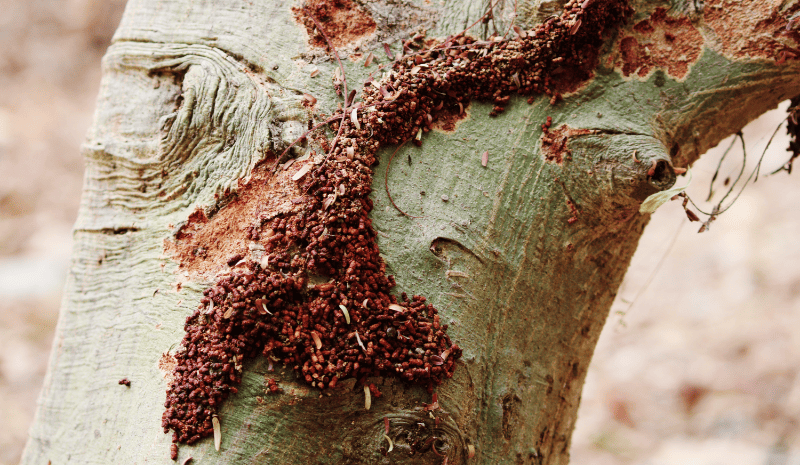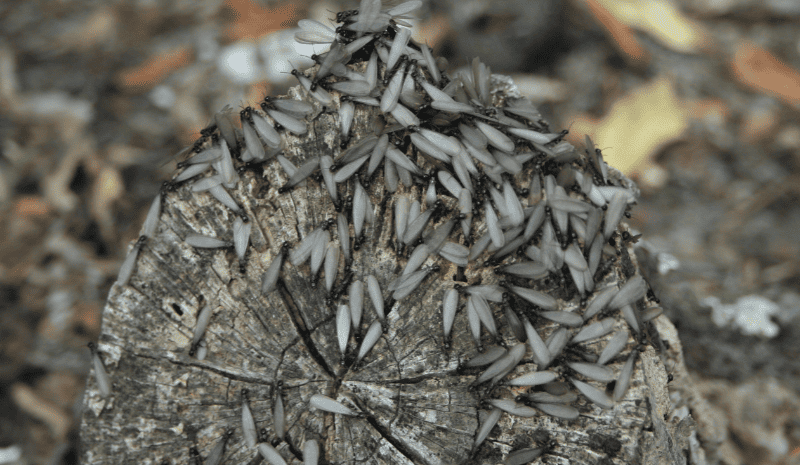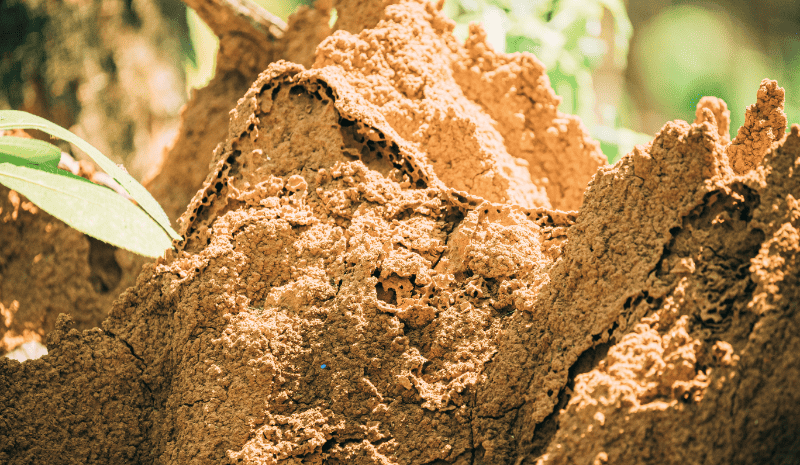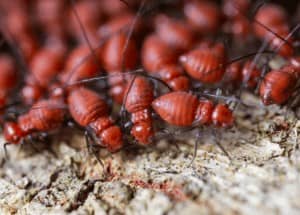Termite Life Cycle Overview
The process of understanding the termite life cycle is crucial for any homeowner or business owner. From the egg to the nymph, and finally, the adult stage, each phase of a termite’s life plays a pivotal role in the growth and success of a colony. Knowing the different stages of a termite’s life cycle can help identify potential infestations and ensure proper treatment. To learn more about each stage of the termite life cycle, continue reading our detailed guide. Additionally, it is important to understand the factors that can affect a termite’s lifespan, as discussed in our article on termite life cycle factors.

Stage 1: Egg
The termite life cycle begins with the egg stage. During this phase, the queen termite lays eggs in masses, which can range from a few dozen eggs to several hundred eggs at a time. The eggs are small, white, and oval-shaped, typically measuring around 0.5mm in length and are generally laid in soil or wood.
The Incubation Period: Eggs typically hatch within 14 to 30 days after they are laid, depending on several factors such as temperature, humidity, and the species of termites.
The Role of Eggs in Termite Colonies: Eggs are an essential component of termite colonies. They serve to replenish the colony’s population and ensure its survival over time. The number of eggs laid by the queen termite determines how quickly the colony grows and expands.
It is worth noting that the survival and development of termite eggs may be affected by environmental factors such as temperature, humidity, and food availability. As the eggs require a constant temperature and humidity level to hatch successfully, any fluctuations in these conditions could jeopardize their survival.
To learn more about the complete termite life cycle, check out our article on termite lifespan and infestation stages.
Stage 2: Nymph
After hatching from their eggs, termites enter the nymph stage. During this stage, the termites are still immature and undergo several molts before reaching adulthood. Let’s take a closer look at what happens during the nymph stage of the complete termite life cycle.
- First Instar Nymphs: These newly hatched nymphs are small and white. They cannot see and have no functional legs. They rely on their parents or other members of the colony for their food and care.
- Second Instar Nymphs: As they grow, they molt and enter the second instar nymph stage. They develop functional legs, antennae, and eyes. However, they still rely on the colony for survival and cannot feed themselves.
- Third Instar Nymphs: After another molt, the nymphs enter the third instar nymph stage. At this point, the nymphs can participate in colony tasks such as caring for eggs, building tunnels, and caring for other nymphs.
- Fourth and Fifth Instar Nymphs: The nymphs molt again and enter the fourth and fifth instar stages. They continue to grow and develop until they become fully mature adults.
During the nymph stage, termites are vulnerable to predators and environmental factors. They are also at risk of being discovered by humans if they infest a structure. That’s why it’s important to be able to identify the signs of an infestation and take preventative measures to protect your home.
Stage 3: Adult
The third and final stage in the termite life cycle is the adult stage. Adult termites have fully developed wings and reproductive organs, enabling them to participate in the swarming process and reproduce to form new colonies. At this stage, termites have a strong appetite for cellulose material and are constantly foraging for food.
During this stage, adult termites are divided into different groups with specific duties that contribute to the survival of the colony. These groups include workers, soldiers, and reproductive termites (also known as alates). Workers are responsible for feeding and caring for the colony, building tunnels and taking care of the young ones. Soldiers, on the other hand, defend the colony from predators, both from other colonies and natural predators.
Reproductive termites, also referred to as swarmers, are responsible for finding a mate and starting new colonies. They undergo a process called swarming, where they leave their current colony in search of a mate and suitable location for a new colony. Swarming usually takes place during the spring or early summer, and is often triggered by an increase in temperature or rainfall.
Once a reproductive termite finds a mate, they engage in a brief courtship period before forming a pair. They then establish a new colony, where the queen termite will lay eggs and begin the cycle all over again. The lifespan of an adult termite varies depending on the species but can range from a few months to a few years.
Here’s a table to summarize the characteristics of adult termites:
| Characteristics | Description |
|---|---|
| Wings | Fully developed wings |
| Appetite | Strong appetite for cellulose material |
| Groups | Workers, soldiers, and reproductive termites (alates) |
| Duties | Feeding, caring for the colony, building tunnels, defending, reproducing, and starting new colonies |
| Swarming | Process where reproductive termites leave the colony in search of a mate and suitable location for a new colony |
| Lifespan | Can range from a few months to a few years depending on species |
Here is the table with more information:
| Termite life cycle stage | Description | Duration |
|---|---|---|
| Egg | The first stage in termite life cycle. Eggs are laid in masses, white, and oval-shaped by the queen termite. | 14-30 days |
| Nymph | The second stage in their life cycle. During this stage, termites are wingless and unable to reproduce. They moult several times before reaching adulthood. | Varies by species |
| Adult | During this stage, termites will have fully formed colonies, be able to fly (if breeding), and reproduce. | Varies by species and depends on colony development |
The adult stage is a crucial part of the termite life cycle, as it is responsible for the continuation and growth of the colony. Understanding the characteristics and behaviors of adult termites can aid in the prevention and treatment of infestations.
The Reproductive Process
The complexities and intricacies of termite reproduction never cease to amaze scientists and homeowners alike. It’s a process that involves swarming, mating, and the formation of new colonies. The survival of the termite species relies heavily on this reproductive process, making it a crucially important aspect of their lives. Let’s explore this fascinating topic in more detail.

Alates and Nuptial Flight
Before colony formation, the reproductive termites, or alates, leave the colony in a swarm. This is known as the nuptial flight. During the nuptial flight, alates search for a mate from a different colony. Once they find a mate, they shed their wings and form a new colony. This is an essential process as the genetic diversity of the colony is increased which can help it develop better resistance to harmful pathogens.
Foundation and Early Growth Stage
After the nuptial flight, the new king and queen establish the foundation of the colony by digging a chamber into the soil. They seal themselves in and mate. The queen then begins to lay eggs, which hatch into nymphs. Initially, the king and queen take care of the nymphs until they become adult workers.
Intermediate Growth Stage
As the colony grows, the workers take over the care of the nymphs, and the king and queen focus on reproduction. The colony’s size increases as more nymphs develop into workers, soldiers, and reproductives.
Advanced Growth Stage
In the advanced growth stage, the colony has an extensive network of tunnels and chambers. The queen’s role is mainly reproductive, and she can lay around 30,000 eggs daily. The colony continues to grow, and the workers continually expand the tunnels and chambers to make room for new members.
It’s important to note that termite colony growth is gradual and can vary based on various factors such as climate, food availability, and age of the queen. However, once a colony reaches the advanced growth stage, it can cause significant damage to a property.
It’s crucial to take preventative measures to avoid infestations and spot them early on to mitigate damage. Treatment options include bait systems, liquids, and fumigation, but prevention is always the best option to avoid costly damage.
Factors Affecting Termite Life Cycle
As with any living organism, a termite’s life cycle is greatly affected by a variety of internal and external factors. Understanding these factors is crucial to preventing and treating termite infestations. In this section, we will explore the different climatic, food, and biological factors that can impact the duration and success of a termite’s life cycle. By gaining a deeper understanding of these factors, you can take proactive steps to protect your property from termite damage.
Climatic Conditions
The life cycle of termites is highly dependent on the climatic conditions of the environment. As such, climatic changes can have a significant impact on the success of a termite colony. Here are some of the ways climatic conditions can affect the termite life cycle:
- Moisture: Termites thrive in moist environments, making water a crucial component of their life cycle. Lack of moisture not only limits their activity, but can also destroy their food source. In areas with low ambient moisture, termites might build mud tunnels to trap and retain water. If the relative humidity in the environment drops below 40%, termite colonies might be forced to relocate in search of a more humid environment.
- Temperature: Temperature fluctuations can have a profound effect on the growth and development of termite colonies. Extreme temperatures can cause termite eggs to die, disrupt the molting process of nymphs and slow the rate of growth of the colony.
- Wind: High winds can damage termite mud tubes, forcing colonies to rebuild. This also disrupts the pattern of foraging of the workers, affecting the colony’s food supply.
- Rainfall: Rainfall can cause flooding, which can be catastrophic for termite colonies, leading to significant mortality of workers, nymphs, and soldiers.
As you can see, climatic conditions play a huge role in termite life cycle and colony growth. Certain measures can be adopted to create an environment that is less conducive to termite activity. For example, reducing the moisture content in the environment by avoiding water accumulation near structures, using dehumidifiers, and repairing pipes and fixtures can help prevent termite infestation. Additionally, proper ventilation and temperature control in structures can discourage termite invasion.

Food Availability
The availability of food is a significant factor affecting the termite life cycle. There are different types of termites, and each species has its preferred source of food. The primary sources of food for termites are cellulose-based materials such as wood, cardboard, paper, and even some plants. Termites cannot survive without a source of food.
If there is a shortage of food, the termite colony will become weaker, and the termites will exhibit signs of stress. In some cases, the termites may even start feeding on non-cellulose materials like insulation, plastics, and other materials. This behavior indicates that the colony is in distress and is trying to find any available source of food.
In contrast, when there is an adequate supply of food, the termite colony will grow and become more active. The termites will reproduce and expand the colony, which can lead to a more significant infestation. Homeowners need to ensure that they do not have any sources of wood or cellulose-based materials near their homes to prevent termite infestations. Additionally, homeowners should have regular inspections to detect and prevent infestations before they become severe.
The Age of the Queen
The age of the queen termite is a crucial factor in the life cycle of the termite colony. A queen termite’s lifespan can be as long as 25 years, during which she can produce up to one thousand eggs per day.
As the queen ages, her reproductive capacity decreases, which can lead to a decline in the size of the colony. This decline in size can result in a reduced ability to forage for food, defend against predators, and take care of the young termites.
To illustrate this point, let’s take a look at a table showing the hypothetical lifespan and egg production of a queen termite:
| Age of Queen | Egg Production per Day |
|---|---|
| 1 year | 1,200 |
| 5 years | 800 |
| 10 years | 400 |
| 15 years | 200 |
| 20 years | 100 |
| 25 years | 50 |
As you can see, as the queen ages, her egg production decreases, which can lead to a smaller, weaker colony.
Replacing an Old Queen
In some cases, a new queen can take over a colony if the old queen dies or becomes unable to produce enough eggs. The workers will begin to rear a new queen, and once she is ready, she will mate and begin laying eggs.
However, this replacement process can take months, during which time the colony may be vulnerable to predators, disease, and starvation.
Conclusion
In conclusion, understanding the complete termite life cycle is crucial for effective pest control and prevention. By following the preventative measures discussed in this article, you can greatly reduce the risk of a termite infestation in your home or property. Regular inspection, maintenance, and treatment of any signs of infestation can also help to minimize the damage caused by termites.
Remember, termites are persistent and highly adaptable creatures that can cause extensive damage to your property in a short amount of time. It’s essential to act quickly and seek professional help if you suspect an infestation. Additionally, it’s important to consider the factors that affect termite life cycle, such as climatic conditions, food availability, and the age of the queen, when planning your prevention and treatment strategies.
Frequently Asked Questions
What is the average lifespan of a termite?
The average lifespan of a termite varies among the different castes. The worker and soldier castes may live for 1-2 years, while the queen can live up to 25 years.
What kind of damage can termites cause?
Termites can cause extensive damage to wooden structures, flooring, and furniture, as well as papers, books, and insulation. They can even damage non-wooden items such as plaster and asphalt.
Are termite infestations covered by insurance?
Most homeowner insurance policies do not cover damage caused by termites. It is important to have a separate termite protection plan in place.
How can I identify a termite infestation?
Signs of a termite infestation include mud tubes on walls and foundations, discarded wings, wood that sounds hollow or papery when tapped, and visible swarming of winged termites.
What attracts termites to a home?
Termites are attracted to moisture, so any areas with excess moisture, such as leaky pipes or standing water around the foundation, can attract them. They are also attracted to wood, so any wooden structures or piles of wood near the home can be a potential attraction.
Can termites be prevented?
Yes, there are several preventative measures that can be taken, such as reducing moisture sources, sealing entry points, and using termite-resistant building materials.
What is the termite swarming season?
The termite swarming season varies based on the species and location, but it generally occurs in the spring or summer months.
Can termites be treated without chemicals?
Yes, there are non-chemical treatments available, such as heat treatments, microwave treatments, and cold treatments. However, these treatments may not be as effective as chemical treatments.
How long does termite treatment take?
The length of termite treatment can vary depending on the method used, the extent of the infestation, and the size of the home. It can range from a few hours to several weeks.
What should I do if I suspect a termite infestation?
If you suspect a termite infestation, it is important to contact a professional exterminator as soon as possible to assess the situation and provide treatment options.

